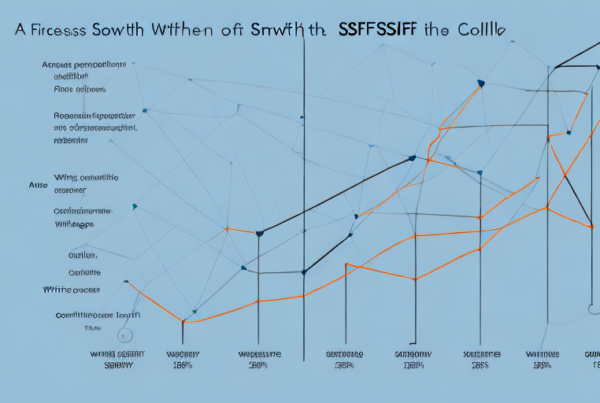As an Australian investor, understanding and considering all the available investment options is critical. One of the most popular options in recent years has been the Self-Managed Super Fund (SMSF). But what exactly is an SMSF, and what benefits does it offer? In this article, we’ll explore the basics of SMSFs, why they matter, and how you can set one up.
Understanding SMSF: A Brief Overview
If you’re looking for greater control over your investment decisions and asset allocation, an SMSF may be worth considering. SMSFs are a type of superannuation fund, which is a way for Australians to save for retirement. However, with an SMSF, you get to choose exactly how your retirement savings is invested.
When it comes to retirement planning, there are many different options available. However, many Australians are turning to SMSFs as a way to take greater control over their investments and achieve a more customized investment strategy. With an SMSF, you have the ability to choose exactly how your retirement savings are invested, which can be a major advantage for those who are looking to maximize their returns.
What is a Self-Managed Super Fund (SMSF)?
An SMSF is a private superannuation fund that you manage yourself, rather than through a traditional superannuation fund. By taking control of the fund’s management, you can decide how your retirement savings will be invested, and optimize your investment strategy.
One of the key benefits of an SMSF is that you have greater control over your investments. This means that you can choose investments that align with your personal values and goals, and that you can adjust your investment strategy as needed to respond to changes in the market or your personal circumstances.
Key Components of an SMSF
The main components of an SMSF are the trustees, members, and investments. Trustees are responsible for managing the SMSF, while members are the people who contribute to the fund. Investments can include anything from cash, to property, to shares.
When it comes to managing an SMSF, it’s important to have a clear understanding of each of these components. This can help you to make informed decisions about how to manage your fund, and can ensure that you are maximizing your returns while minimizing your risks.
SMSF vs. Traditional Super Funds
Unlike traditional superannuation funds, which are managed by financial institutions, SMSFs give you the ability to control your investments and asset allocation. This means that you can choose investments that align with your personal values and goals, and can adjust your investment strategy as needed to respond to changes in the market or your personal circumstances.
Another advantage of SMSFs is that they can be more cost-effective than traditional super funds. This is because you have greater control over the management of your fund, which can help to reduce fees and charges. Additionally, because SMSFs are typically managed by a small group of people, they can be more agile and responsive to changes in the market.
Overall, SMSFs can be a powerful tool for retirement planning. By taking control of your investments and asset allocation, you can achieve a more customized investment strategy that is tailored to your personal goals and values. However, it’s important to have a clear understanding of the key components of an SMSF, and to have a solid investment strategy in place, in order to maximize your returns and minimize your risks.
The Benefits of SMSF for Australian Investors
Self-Managed Super Funds (SMSFs) have become increasingly popular in Australia, with more and more investors opting for this type of retirement savings account. One of the major advantages of an SMSF is the increased control over investment decisions. However, there are several other benefits worth considering:
Greater Control Over Investments
With an SMSF, you have complete control over how your retirement savings are invested. You can choose the type of investments that best suit your financial goals and risk appetite. This includes a wide range of investment options such as property, shares, cash, and fixed income securities. You can also choose the level of risk you’re willing to take on, which can help you achieve higher returns.
Tax Advantages and Flexibility
SMSFs offer greater tax flexibility and control, as you can choose the most tax-effective investments and strategies. This can help you minimize the amount of tax you pay and maximize your retirement savings. Additionally, SMSFs offer greater flexibility in terms of contributions and withdrawals. You can choose to make contributions at any time and in any amount, as long as you stay within the contribution caps set by the Australian Taxation Office (ATO).
Customized Estate Planning
With an SMSF, you can customize your estate planning and ensure your retirement savings are distributed according to your wishes. This means you can nominate specific beneficiaries to receive your superannuation benefits when you pass away. You can also set up a binding death benefit nomination, which ensures that your wishes are legally binding.
Potential for Lower Fees
While there may be fees associated with setting up and managing an SMSF, you can potentially save on management fees and other costs associated with traditional superannuation funds. This is because you have complete control over your investments and can choose lower-cost options such as index funds or exchange-traded funds (ETFs).
In conclusion, SMSFs offer a range of benefits for Australian investors. From greater control over investments to tax advantages and customized estate planning, an SMSF can help you achieve your financial goals and secure your retirement.
Setting Up an SMSF: The Process
If you’re looking to take control of your superannuation and manage your own retirement savings, setting up a self-managed super fund (SMSF) could be the right choice for you. Before setting up an SMSF, it’s important to understand the eligibility criteria and the steps involved:
Eligibility Criteria for SMSF
To set up an SMSF, you must meet certain eligibility criteria. Firstly, you must be aged over 18 and have a maximum of four members in your fund. Additionally, all members of the SMSF must be Australian residents. It’s important to note that setting up an SMSF requires a significant amount of time, effort and money, so it’s important to carefully consider whether it’s the right choice for you.
Choosing the Right Structure
The next step in setting up an SMSF is choosing the right structure for your fund. This will depend on the number of members and how the fund will be managed. You can choose to have individual trustees or a corporate trustee structure. If you choose to have individual trustees, all members of the SMSF must be appointed as trustees. On the other hand, if you choose a corporate trustee structure, the company acts as the trustee and all members of the SMSF are directors of the company.
Registering Your SMSF
Once you have decided on the structure for your SMSF, you’ll need to register it with the Australian Taxation Office (ATO). To do this, you’ll need to apply for an Australian Business Number (ABN) and a Tax File Number (TFN) for the fund. You’ll also need to ensure that your SMSF is compliant with all relevant laws and regulations.
Creating an Investment Strategy
One of the key benefits of setting up an SMSF is the ability to have greater control over your investment strategy. However, with this greater control comes greater responsibility. Your investment strategy should outline how you plan to invest your retirement savings, including your investment objectives, risk management strategies, and expected returns. It’s important to regularly review and update your investment strategy to ensure that it remains in line with your retirement goals.
Setting up an SMSF can be a complex and time-consuming process, but it can also provide greater control and flexibility over your retirement savings. Before making any decisions, it’s important to seek professional advice and carefully consider whether an SMSF is the right choice for you.
Managing Your SMSF: Roles and Responsibilities
While SMSFs offer greater control and flexibility, managing an SMSF also comes with more responsibility. Here are some key roles and responsibilities to keep in mind:
The Role of SMSF Trustees
Trustees are responsible for managing the fund and making investment decisions on behalf of the members. They must also ensure the SMSF complies with all legal and regulatory obligations.
Compliance and Regulatory Requirements
There are strict compliance and regulatory requirements that SMSFs must adhere to, including record keeping obligations and reporting requirements.
Record Keeping and Reporting Obligations
As an SMSF trustee, you must keep accurate records and report on the fund’s financial position, investment activities, and compliance with legal and regulatory requirements.
Working with SMSF Professionals
While you can manage your SMSF yourself, it’s recommended to work with professionals such as accountants, tax advisors, and financial planners who can provide valuable advice.
Final Thoughts
Self-Managed Super Funds offer a range of benefits to Australian investors seeking greater control and flexibility over their retirement savings. However, managing an SMSF also comes with more responsibility. Before diving in, it’s important to understand the eligibility criteria, the steps involved in setting up an SMSF, and the roles and responsibilities of an SMSF trustee. By doing so, you can make an informed decision about whether an SMSF is right for you.




